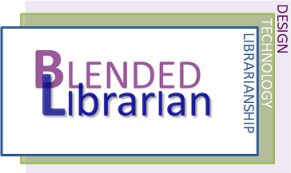As a Blended Librarian I pay attention to the experience that learners in my classroom are having. As they leave the room or reflect on the instruction I deliver I want them to feel as if they experienced a change in what they know and the way they think – and that it will have the affect of permanently changing their thinking or behavior.
In our book Academic Librarianship by Design, published in 2007, John Shank and I introduce our readers to the idea of academic librarians bringing a user experience approach to their work as Blended Librarians. For me, it means focusing my energy on the learners and the experience I want them to have. It’s not about me or my expertise. That’s important, but I want to concentrate on giving the learners as unique a learning experience as is possible.
In some of the recent articles about the role of instructional designers in higher education there is a discussion about their design of the learning experience – and whether the term “instructional designer” accurately reflects this aspect of curriculum design. Perhaps an indicator that change may be on the way, EdSurge recently posted a job listing for a Learning Experience (LX) Designer. While it is possible this is not the first appearance of a position by that title, it is the first one I have encountered. I was curious about the position requirements.
What are some of the activities of this Learning Experience Designer? Here are a few descriptive items from the posting:
- design extraordinary courses and learning experiences
- assists faculty in incorporating best practices, learning theories, and engagement techniques in the development of new courses and the transformation of existing courses
- Apply instructional design methods and learning theories to learner-centered course design
- Suggest and create engaging activities, assessments, interactions, and quizzes
You’re probably thinking, this sounds a lot like what an instructional designer does.
Whitney Kilgour’s article on learning experience designer does, in my opinion, give a better picture of how the learning experience designer contributes to education. Here’s is how she differentiates instructional design from learning experience design:
Instructional designers, like web developers in the ‘90s, historically had expertise in conveying content through a limited set of tools and platforms, such as a learning management system (LMS). LX designers, in contrast, merge design-thinking principles with curriculum development and the application of emerging technologies to help faculty tailor content to student behaviors and preferences. It cuts across disciplines and moves beyond the LMS: LX designers embrace graphic design, multimedia production, research-based standards and social media.
If I understand it correctly, a key difference is the role of the learner in the design process. While instructional designers hardly ignore the learner, the LX designer embraces student involvement in the course by designing “choice into courses by giving students more control over their learning journey through the use of new forms of courseware and adaptive learning tools.” Perhaps it’s this added level of attention to student engagement and adaptive learning design that is missing from the job description. That, and the design thinking approach.
Just as John and I found that “instructional design librarians” or anything resembling a blended librarian job description was quite rare in the early days of Blended Librarianship, in time we began to see more of them each year and now the idea of an instructional design librarian is quite common in academic librarianship. I suspect that in the next two years we’ll see more LX design positions being offered in higher education.
Each new one is likely to advance our understanding of what LX design can contribute to enhanced student learning, and what it means to design a course for a learning experience.
